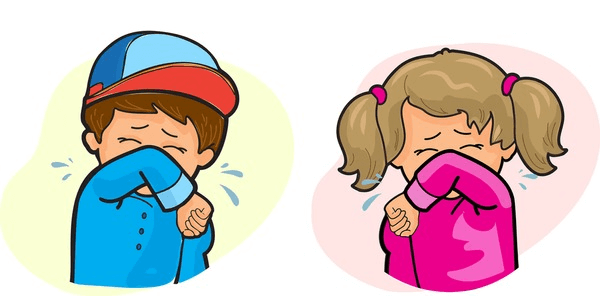Burns and Scalds in Young Children

Burns and scalds are common injuries in children, especially those under five years old, and can result from exposure to heat sources. Despite being similar injuries, burns and scalds differ in their causes:
- Burns result from dry heat sources, such as a hot stove, radiators, or hair styling tools like straighteners and curling irons.
- Scalds are caused by wet heat, like hot liquids or steam.
Burns can also occur from electrical sources or chemicals, though these are less common.
Causes and Symptoms
Young children’s skin is delicate, making them especially vulnerable to burns from hot drinks, which are a frequent cause. Even if a drink feels warm to you, it may still harm a child’s sensitive skin.
Burns and scalds often exhibit similar symptoms, including:
- Redness or peeling of the skin
- Blisters
- Swelling
First Aid for Burns and Scalds
If your child suffers a burn or scald, it’s crucial to act swiftly to alleviate pain and begin the healing process. Here’s what to do:
- Cool the Burn: Immediately place the affected area under cool or lukewarm running water for up to 20 minutes. This helps reduce pain and promotes healing. Avoid using ice or very cold water, as these can restrict blood flow to the injury and impede healing.
- Use the Shower: If possible, support your child in a shower to cool the burn. Ensure the water pressure is low and the temperature is lukewarm. Focus on the injured area to avoid chilling the child.
- Remove Tight Clothing: Carefully remove any clothing from the burn site before swelling begins. If clothing is stuck to the burn, do not attempt to remove it yourself; seek medical assistance.
- Elevate the Burned Area: Raise the affected area to reduce swelling.
- Avoid Blister Popping: Do not break any blisters that form, as this can lead to infection.
- Cover the Burn: Use cling film to cover the burn, which prevents sticking and further injury. If a hand is burned, a clean plastic bag can be used. Place the film over the wound without wrapping it around the limb.
- Seek Medical Advice: Contact your healthcare provider or NHS 111 for guidance. Babies with burns should be evaluated by a doctor or nurse. They can advise whether to go to a minor injuries unit or the emergency department (A&E).
- Avoid Applying Creams: Do not use creams, oils, or butter on the burn, as these can trap heat.
After providing initial care, you can administer pain relief such as infant paracetamol or ibuprofen:
- Infant paracetamol can be given to babies over two months who weigh more than 4kg (9lb) and were born after 37 weeks.
- Infant ibuprofen is suitable for babies three months or older who weigh at least 5kg (11lb).
When to Call an Ambulance
In some cases, burns require urgent medical attention. Call an ambulance if:
- The burn covers more than 5% of the body surface (approximately the size of the child’s palm and fingers is 1%).
- The burn appears white or charred, indicating deep skin damage.
- The burn is located on the face, hands, feet, or genitals.
- The burn crosses a joint or encircles a limb (circumferential burn).
In such cases, specialized care, potentially at a burns unit, is often necessary.
Prevention Tips
Preventing burns and scalds involves vigilance and making your home safer:
- Hot Drinks: Keep hot drinks out of reach and avoid carrying them while holding your child or near them playing. A drink can still scald 15 minutes after being made.
- Kitchen Safety: While cooking, turn saucepan handles away from the edge. Create a safe play area where you can see your child but keep them away from danger.
- Appliance Safety: Use flex holders for appliance cords and place them at the back of counters. Cordless or curly-cord appliances are safer options.
- Radiators and Pipes: Cover radiators and pipes with guards or lower their temperature using thermostatic controls.
- Fire Safety: Store matches and lighters securely. Use a spark device to light gas hobs if they lack an ignition button, as these devices are safer.
- Fireplace: Use a fireguard if you have a fireplace. Choose a wall-fixed guard to prevent access.
- Fire Equipment: Install fire extinguishers and blankets in high-risk areas like the kitchen. Attempt to extinguish only small fires; otherwise, evacuate and call emergency services.
- Smoke Alarms: Install smoke alarms in bedrooms and near the kitchen, ensuring they meet British Standard Kitemark or LPCB standards. Regularly check alarms to ensure they’re operational.
- Cord Management: Hide lamp and appliance cords behind heavy furniture or use flex holders. Secure tall lamps to prevent them from being pulled over.
- Candles: Keep candles out of reach and extinguish them when leaving the room. Never leave a baby alone in a room with a lit candle.
- Water Safety: Install thermostatic mixing valves to regulate tap temperatures. Always fill a bath with cold water first, then add hot water. Test the water before placing your child in it, and never leave them unattended in the bathroom.
- Hair Styling Tools: Unplug hairdryers, straighteners, and curling irons immediately after use and store them safely. Even unplugged, they can remain hot for several minutes.
- Clothing Safety: Check the fire retardancy of your child’s clothing, particularly fancy-dress costumes, which may not be flame-retardant. Be cautious during events with open flames.
If your child’s clothing catches fire:
- Smother the flames with a heavy coat or blanket.
- Lay your child on the floor.
- Roll them to extinguish the flames.
Following these steps can significantly reduce the risk of burns and scalds in your home, keeping your child safe from harm.





